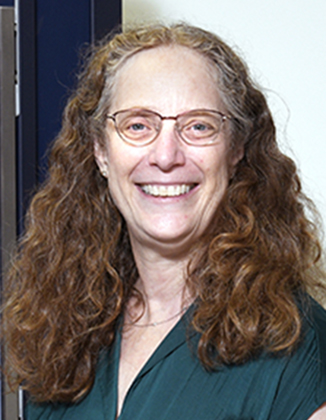Staff Spotlight: Charlotte Stern
 Charlotte Stern is an X-Ray Crystallography Specialist at the Integrated Molecular Structure Education and Research Center (IMSERC). She supports the Department’s research by performing solid-phase, single-crystal, and powder analyses on samples including drug candidates, catalysts, LEDs, and energy storage networks. With over 30 years of experience, her work has frequently contributed to groundbreaking research at Northwestern Chemistry.
Charlotte Stern is an X-Ray Crystallography Specialist at the Integrated Molecular Structure Education and Research Center (IMSERC). She supports the Department’s research by performing solid-phase, single-crystal, and powder analyses on samples including drug candidates, catalysts, LEDs, and energy storage networks. With over 30 years of experience, her work has frequently contributed to groundbreaking research at Northwestern Chemistry.
Your role in the Department is as X-ray Crystallographer for our dedicated core facility IMSERC. What aspects of working at IMSERC do you find most rewarding or enjoyable?
The most rewarding and enjoyable part of my work is working with students and colleagues in IMSERC. There is something about seeing a student’s knowledge grow from taking our chem432 course in diffraction to being able to refine a crystal structure themselves.
In what ways has your work contributed to the groundbreaking research happening at Northwestern Chemistry?
Problem solving. I get to work with a variety of research groups and help them analyze the new molecular structures they are making. Whether it is for precursors to pharmaceuticals, batteries, solar cells, gas storage, and catalysis I can help the researcher understand the structural significance to their research. I get to solve puzzles daily.
IMSERC has undergone several changes and advancements over the years. From your perspective, what are some of the exciting developments currently happening at IMSERC, and how have you witnessed IMSERC's support for research at Northwestern evolve during your tenure?
There have been 2 significant growth spurts in IMSERC since I’ve been working here. The first was the creation of IMSERC from ASL in 2012. This is when we doubled in size and moved to our current facility. We changed from being just an analytical lab to highlighting the educational portion of the facility working with students. This past year we have added a lot of new equipment. The most exciting thing to me is the MicroED that is being installed now. This technique will help in the elucidation of crystals that don’t diffract well enough on our conventional X-ray diffractometers. We will now be able to collect high-quality MicroEd data from simple powders of small molecules to nanocrystals and hopefully, we will obtain an unambiguous structure determination of them all.
Before joining Northwestern, what was the most unconventional or intriguing job you had, and what made it particularly memorable?
Since I joined Northwestern 34 years ago, my only other full-time job was as a staff crystallographer at UIUC where I learned crystallography. But for an unconventional time, I have worked very temporarily in a small chocolate factory which was fun helping friends during their hectic times making and of course tasting chocolate delicacies.
When you're not immersed in your work at IMSERC, what hobbies, activities, or interests do you pursue outside of the professional realm?
Family is very important to me, and I spend a lot of time with them. I also enjoy cooking, entertaining friends, growing some vegetables, and folk dancing when I have the time.
If you had the opportunity to meet anyone, living or deceased, who would you choose, and what would you hope to learn or discuss with them?
When I say I’m a crystallographer, I can let people know what we do by describing Rosalind Franklin. People have heard of her. So, I would love to be able to meet her and discuss what it was like to be a woman in science back then. How she persevered and made some of the most important discoveries in scientific history in what was a “man’s” world. She not only discovered the iconic image of the double helix of DNA but also contributed to improvements in gas masks and the structure of viruses. And it was only years later that her contributions were recognized. Sadly, she had passed away by then.
